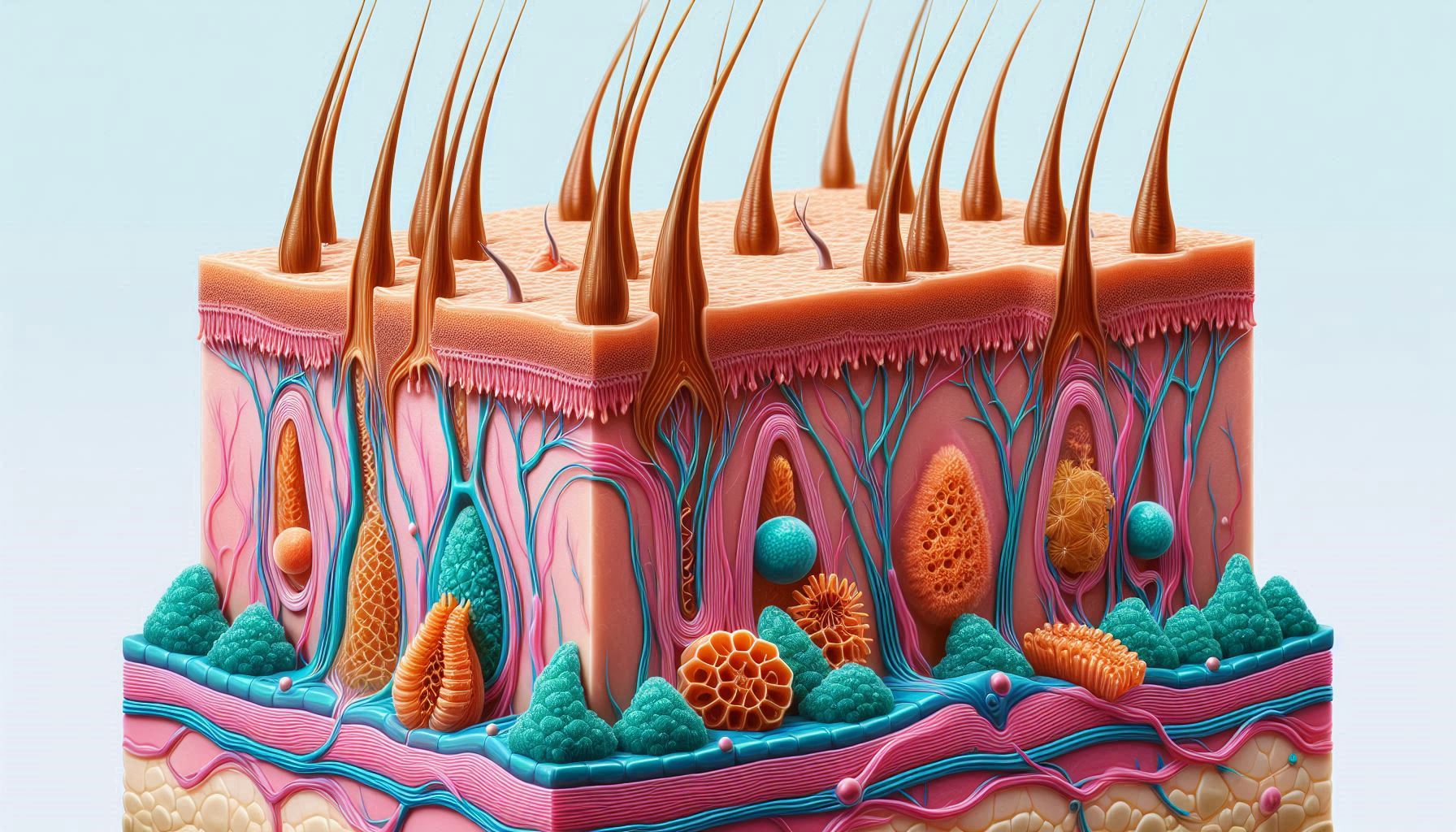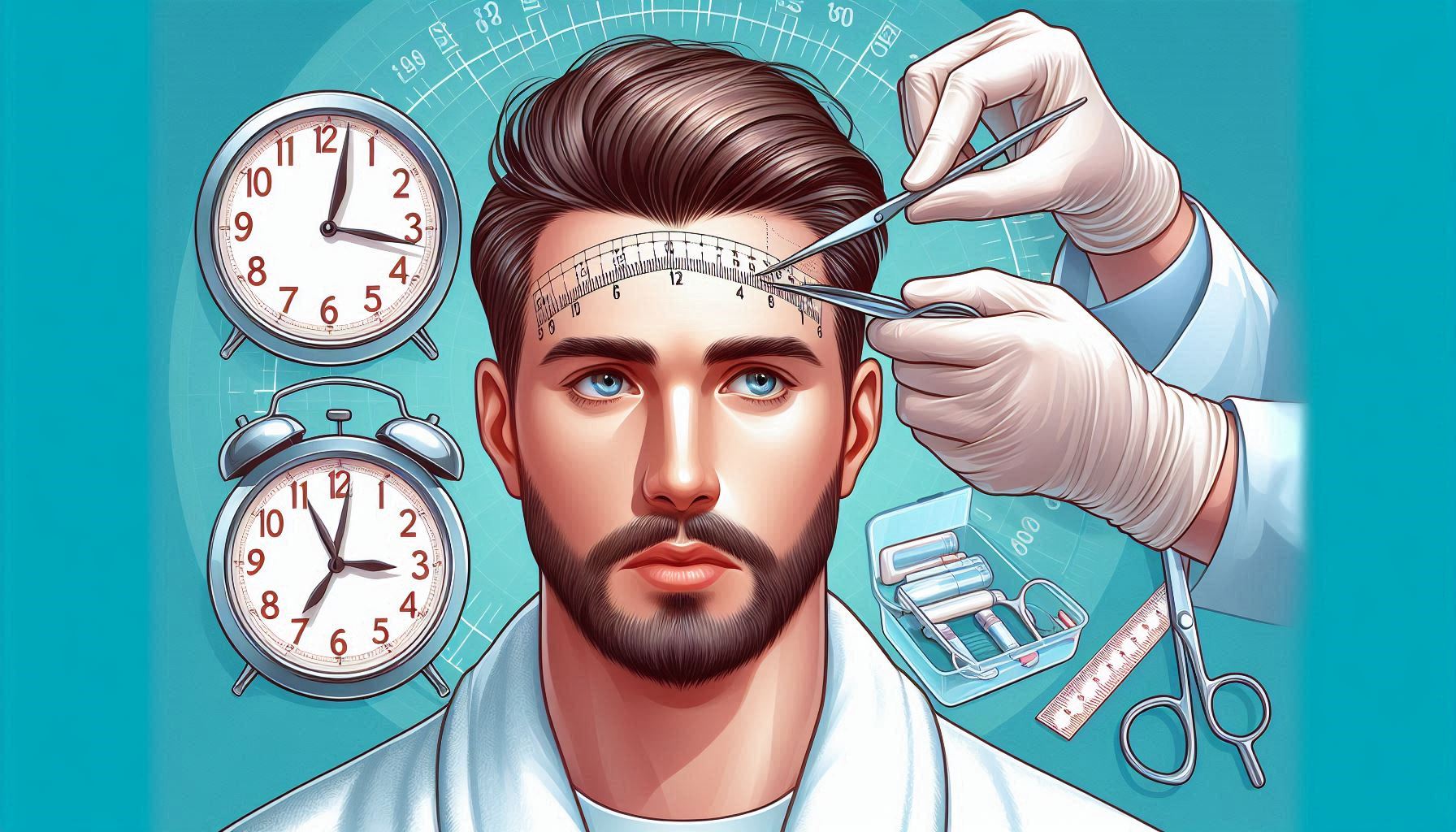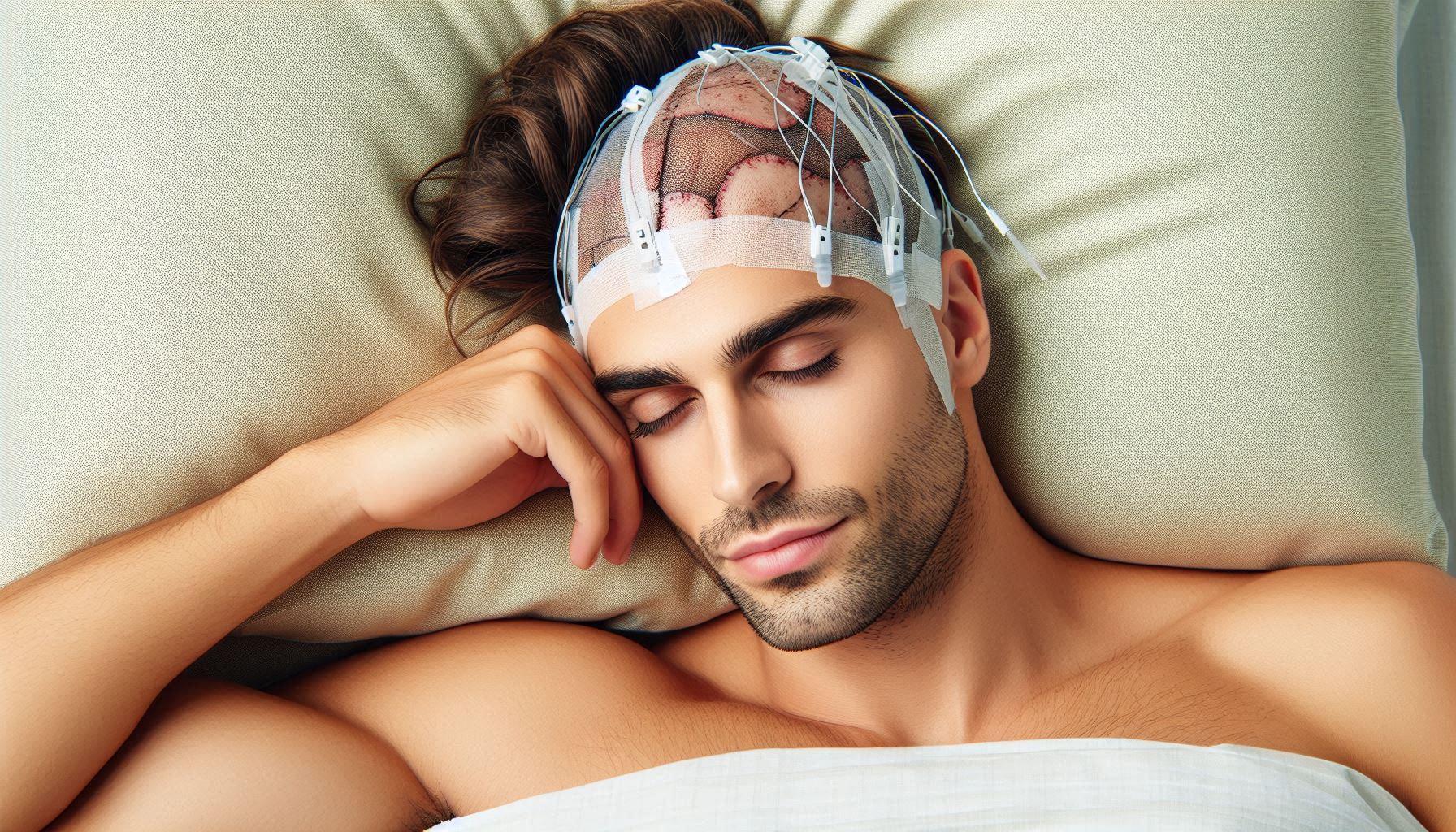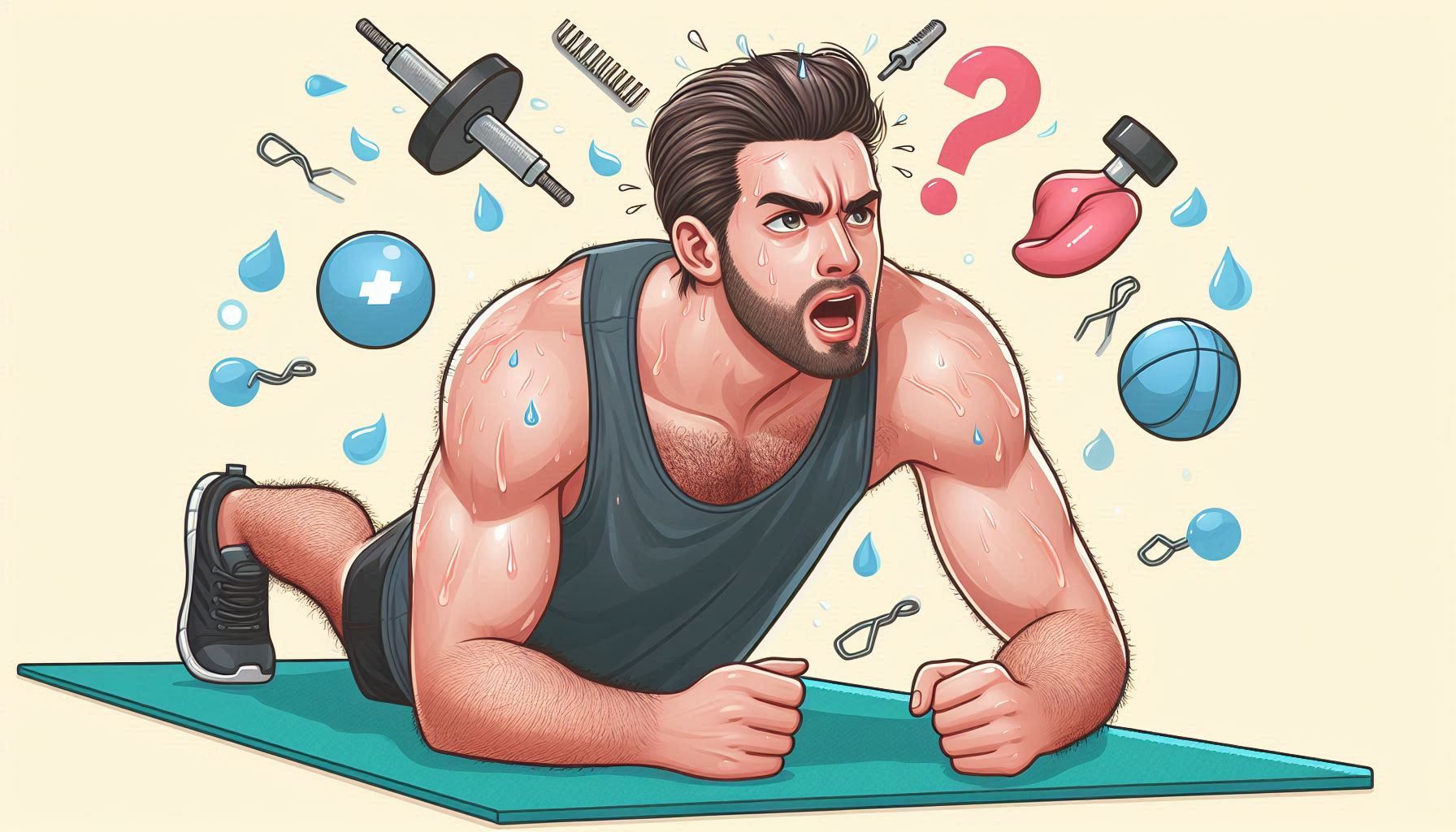
The Basics of Hair Follicle Structure and Growth Cycles
Hair is an essential feature of the human body, serving both aesthetic and functional roles. Beyond its contribution to appearance, hair protects the scalp from UV radiation, helps regulate body temperature, and enhances sensory perception. Understanding the structure of hair follicles and the hair growth cycle is crucial for those interested in hair health, hair loss treatments, and restoration techniques.
In this article, we will explore the anatomy of hair follicles, the stages of hair growth, factors affecting hair health, and common hair concerns, along with solutions to maintain strong, healthy hair.
Understanding Hair Follicle Structure
Hair grows from a complex structure called the hair follicle, which is embedded in the dermis (middle layer of the skin). Each follicle consists of multiple components, playing a vital role in hair growth, health, and regeneration.
1. Key Components of the Hair Follicle
✔ Hair Shaft – The visible part of the hair, composed of keratinized protein.
✔ Hair Root – The part of the hair that extends into the skin, anchored within the follicle.
✔ Hair Bulb – Located at the base of the follicle, where new hair cells are generated.
✔ Dermal Papilla – Contains blood vessels that supply nutrients and oxygen for hair growth.
✔ Sebaceous Gland – Produces sebum (natural oil) to moisturize the scalp and hair.
✔ Arrector Pili Muscle – Tiny muscle that causes hair to stand up when stimulated (goosebumps).
Each of these components plays an essential role in hair growth and overall hair health.
The Hair Growth Cycle: Understanding How Hair Grows
Hair grows in four distinct phases, known as the hair growth cycle. Each hair follicle follows an independent cycle, ensuring that hair continuously regenerates and replaces lost strands.
1. Anagen Phase (Growth Phase)
✔ This is the active phase of hair growth.
✔ Hair follicles continuously produce new cells, pushing the hair shaft upward.
✔ The longest phase, lasting between 2 to 7 years.
✔ 80-90% of hair follicles are in this phase at any given time.
✔ Longer anagen phases result in longer hair length.
Factors like genetics, nutrition, and hormonal balance determine the duration of this phase.
2. Catagen Phase (Transition Phase)
✔ A short phase lasting 2-3 weeks.
✔ Hair growth slows down, and the hair follicle begins to shrink.
✔ The hair detaches from the blood supply, but remains in place.
✔ 1-3% of hair follicles are in this phase at any time.
This phase prepares the follicle for the resting stage, ensuring a controlled transition.
3. Telogen Phase (Resting Phase)
✔ Lasts 3-4 months, during which the hair follicle is dormant.
✔ The old hair remains attached, while new hair begins to form underneath.
✔ 10-15% of hair follicles are in this phase at any given time.
After this phase, the old hair sheds naturally, making way for new hair growth.
4. Exogen Phase (Shedding Phase)
✔ The final stage, where the old hair sheds completely.
✔ This phase is part of the natural renewal process, and 50-100 hairs fall out daily.
✔ Shedding occurs gradually, preventing noticeable thinning.
Once shedding is complete, the follicle re-enters the anagen phase, and new hair begins to grow.
Factors Affecting Hair Growth and Health
Several factors influence the hair growth cycle and overall hair health. Some of these are natural, while others result from lifestyle choices and external influences.
1. Genetics
✔ Determines hair growth rate, density, and longevity.
✔ Some people naturally have a longer anagen phase, allowing them to grow longer hair.
✔ Androgenetic alopecia (genetic hair loss) is inherited and affects both men and women.
2. Nutrition and Diet
✔ Hair needs essential vitamins and minerals for healthy growth.
✔ Key nutrients for hair health:
- Protein (Keratin production)
- Iron (Oxygen supply to follicles)
- Biotin & Vitamin B-complex (Supports hair strength)
- Omega-3 Fatty Acids (Keeps hair hydrated)
A nutrient-deficient diet can weaken hair follicles and increase hair shedding.
3. Hormonal Changes
✔ Hormones play a significant role in hair growth regulation.
✔ Pregnancy, menopause, and thyroid disorders can trigger excessive hair shedding.
✔ Dihydrotestosterone (DHT) is a key hormone linked to male and female pattern baldness.
4. Stress and Lifestyle Factors
✔ Chronic stress can push hair into the telogen phase prematurely, causing excessive shedding (telogen effluvium).
✔ Lack of sleep and physical health issues can negatively impact hair growth.
✔ Smoking and excessive alcohol consumption affect blood circulation, reducing follicle nutrition.
5. Haircare and Styling Practices
✔ Overuse of heat styling tools and harsh chemicals can weaken hair structure.
✔ Tight hairstyles (ponytails, braids) cause traction alopecia.
✔ Frequent hair dyeing, chemical treatments, and bleaching can lead to brittle, damaged hair.
Using gentle hair products and limiting heat exposure can promote healthier, stronger hair.
Common Hair Growth Concerns and Solutions
1. Hair Thinning and Excessive Shedding
✔ May be due to hormonal imbalances, poor diet, or stress.
✔ Solution: Improve nutrition, manage stress, and consult a specialist for proper treatment.
2. Slow Hair Growth
✔ Could be due to short anagen phase, genetics, or scalp issues.
✔ Solution: Use hair growth stimulators like minoxidil or laser therapy.
3. Hair Loss and Bald Spots
✔ May result from androgenetic alopecia, autoimmune disorders, or scalp infections.
✔ Solution: PRP therapy, hair transplants, or specialized treatments.
Hair Restoration Solutions for Lasting Results
For those experiencing significant hair loss or thinning, modern hair restoration treatments can help:
✔ Hair Transplant Surgery – Restores hair permanently by transplanting follicles from donor areas.
✔ Platelet-Rich Plasma (PRP) Therapy – Uses growth factors from the patient’s own blood to stimulate hair growth.
✔ Low-Level Laser Therapy (LLLT) – Enhances blood circulation and promotes healthy follicles.
Advanced hair restoration clinics offer customized treatment plans based on individual needs.
Conclusion: Understanding Hair Follicle Health for Better Hair Growth
Hair follows a natural growth cycle, and understanding the hair follicle structure helps in maintaining strong, healthy hair. By adopting proper hair care routines, a balanced diet, and professional treatments, individuals can support hair growth and minimize hair loss.
For those experiencing excessive hair loss or seeking advanced hair restoration solutions, visit Center for Advanced Hair Restoration. Their team of experienced specialists provides cutting-edge hair loss treatments and personalized care for optimal hair regrowth.
📞 Schedule Your Consultation Today!
🌐 Visit: Center for Advanced Hair Restoration
Take control of your hair health and restore your confidence with expert care!




